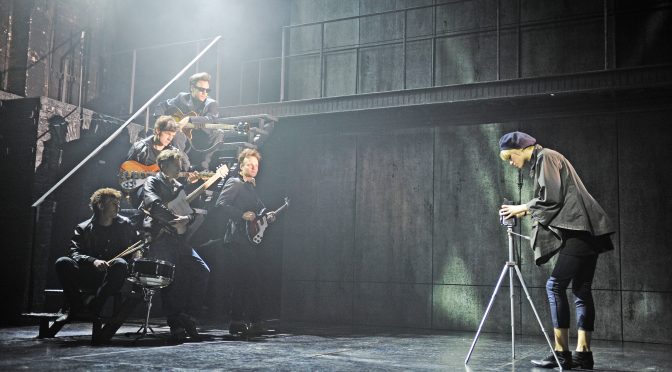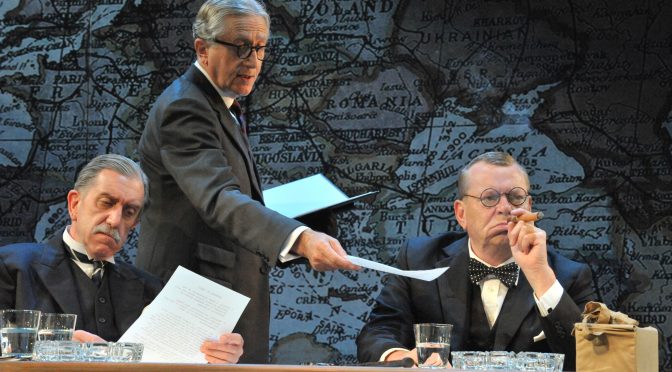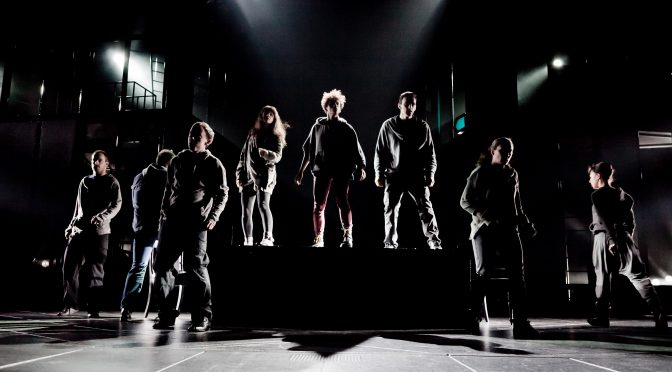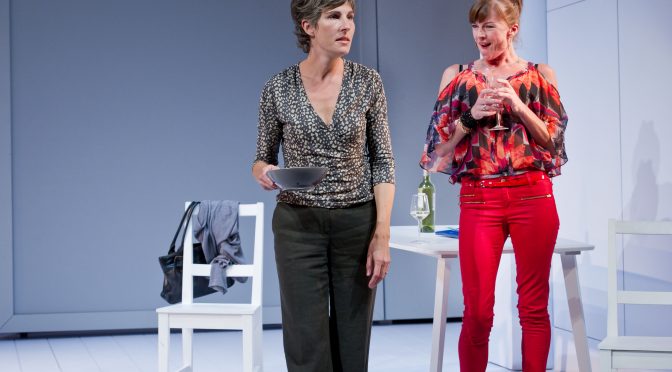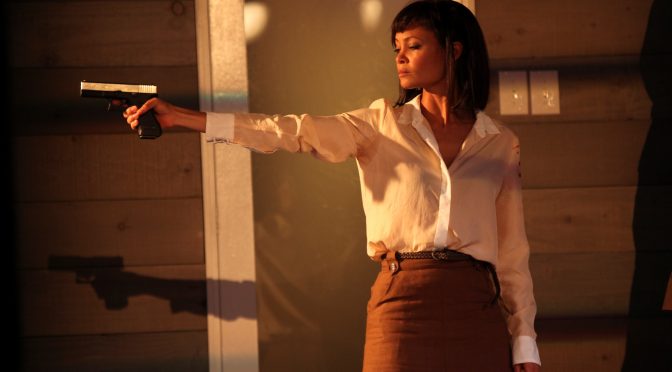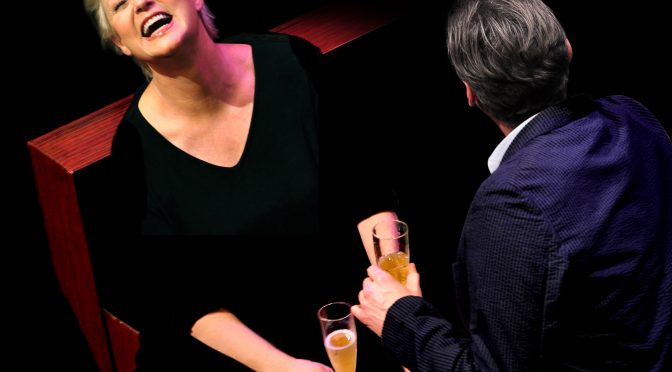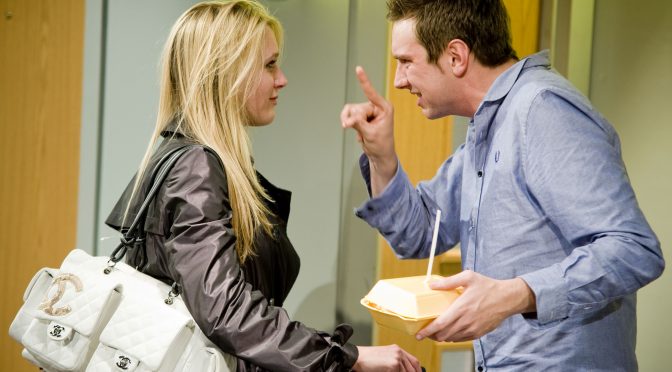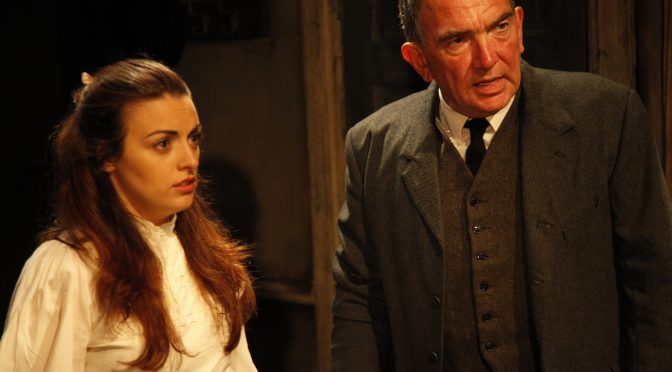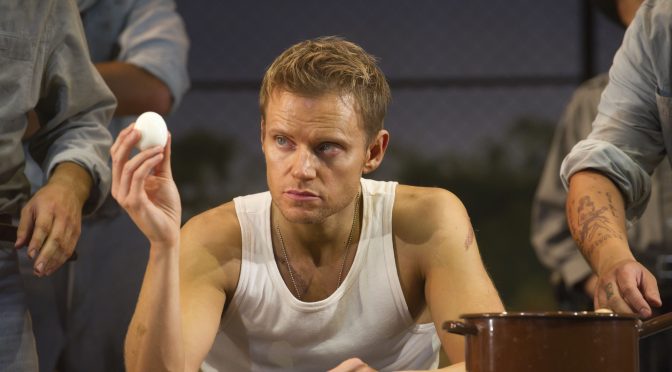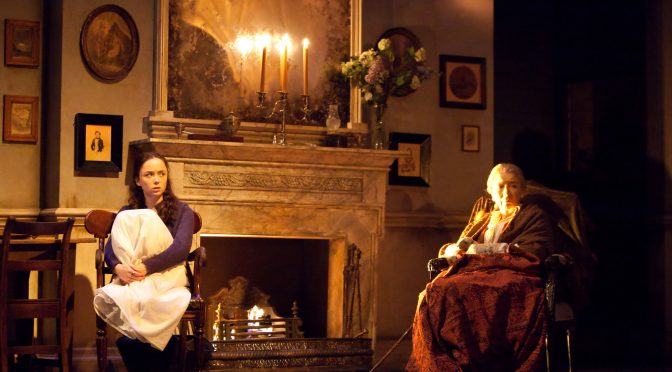Thinking of Backbeat as The Beatles musical is inevitable shorthand. But it is unfortunate and misleading. This is the story of the group at their formation, when the Fab Four numbered five and played cover versions in dingy Hamburg bars. The show contains only snatches of Lennon and McCartney and is unlikely the please those joining walking tours to Abbey Road. As long as you don’t go expecting to hear a string of Beatles hits, you’ll find plenty to engage you.
Backbeat isn’t really a musical at all. It’s a play with songs. And it’s the performance of the music – from faltering beginnings to growing confidence – rather than the music itself that forms part of the drama. It takes guts to show this on a West End stage and it adds enormously to the play, whose focus is Stuart Sutcliffe who, in his tragically short life, was co-opted into his friend John Lennon’s band and then left it to pursue his own path as a painter.
We aren’t just watching Sutcliffe or The Beatles grow artistically. At the heart of Backbeat is a love triangle between Sutcliffe and Lennon, to whom he acts as some kind of muse, and Sutcliffe’s new girlfriend Astrid Kirchherr. All three performances are remarkably credible. Andrew Knott provides the perfect portrait of the genius in waiting as Lennon. Nick Blood is moving as the troubled Sutcliffe, and his relationship with Astrid, played by Ruta Gedmintas who radiates 60s cool, has fantastic on stage chemistry.
What director David Leveaux and his cast deliver is an explosion of young creativity that is inspiring. Rough and ready, impassioned and precocious, these characters have a sense of destiny that (forget hindsight) is the privilege of youth – what’s important is the electric atmosphere that bounces off them. Backbeat is a bold experiment that deserves success. If its components fail to wholly satisfy, bear in mind that it is more than the sum of its parts. Its energy is infectious and it will have your reaching for your Beatles back catalogue to continue the story as soon as you get home.
Until 24 March 2012
Photo by Nobby Clark
Written 7 November 2011 for The London Magazine

